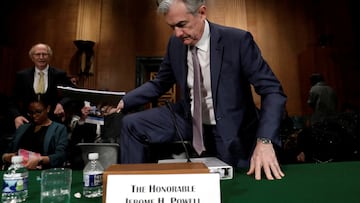What is the relationship between inflation and unemployment?
The Federal Reserve, says that it may not be possible to keep unemploymnet down as interest rates go up. How is this connected to inflation?

In the first sixth months of this year, the stock market lost a fifth of its value, and inflation increased by three percent.
Gas prices remain high, the remaining impacts of the covid-19 pandemic on global supply chains, and increasing interests rates have created a tense economic environment.
The US Federal Reserve has increased interest rates by 75 base points in the last month, corresponding with a 0.75 percent increase in rates. The hope is that the bump in rates will increase price of borrowing which could slow business investment to decrease demand and meet supply. A few weeks back, economist Larry Summers came under fire for arguing that unemployment needs to increase to five percent to get inflation back under control. While visiting with his counterparts in Europe, Chairmen Jerome Powell made “no guarantee that interest rate increase.
- Did you know? How old is America on July 4th 2022?
The memory of the Great Ression looms large
During the meeting at the European Central Bank, Powell was asked if he felt that markets were leading and the Fed was following. Powell said he felt that it was the other way around but in times like this it becomes abundantly clear how intertwined the Federal Reserve and the financial sector are. On the hearts and minds of many are fears over a recession with much of the nation haunted by the Great Recession. The Federal Reserve and the government bailed out banks who used funds however they saw fit with millions left to suffer the consequences of their failure. Ten million households lost their homes in the wake of the 2008 Financial Collapse which led to a massive wave of unemployment.
The economic policies of people like Milton Freedom and Alan Greenspan contributed to fostering the conditions ripe for crisis. This much Greenspan has admitted to by saying that he knew that a crisis of that magnitude could happen but that he “didn’t know when.”
“You can’t have a crisis of that nature and know its not a surprise.”
With such a cavalier response, many have come to distrust financial institutions, including those that are meant to provide stability like the Fed.
However, Chairmen Powell, remains confident that “the U.S. economy is well-positioned to withstand tighter monetary policy.″ Higher rate hikes are expected, including after a historic 0.75 percent in June. When the announcement was made, Powell told the public and investors that further increases should be expected in the coming months.
“The labor market is extremely tight in the United States,” said Powell, whose colleagues are predicting that unemployment will increase by the end of this year. By 2024 the Federal Reserve expects the rate of those without work to hit 4 percent. Some of this increase will come as a result of efforts to curtail inflation which is still expected to rise by 2.6 percent by the end of this year.
Did Will unemployment increase?
The next unemployment report will be released on Friday 8 July.
It is quite perverse to think that the best way of reducing demand to meet supply requires the unemployment rate to increase.
What many realized when the pandemic first began was that the unemployment benefits offered in many states are not nearly enough to cover basic incentives. Let us not forget, that unemployment benefits are paid by workers on a monthly basis. The benefits that we pay are then distributed back in small quantities. If this becomes a households primary income, their demand for goods plummets. This condition is only made more precarious by the fact that sixty-four households would not be able to cover “Relatively small, unexpected expenses, such as a car repair or a modest medical bill [...around] $400.”
"






